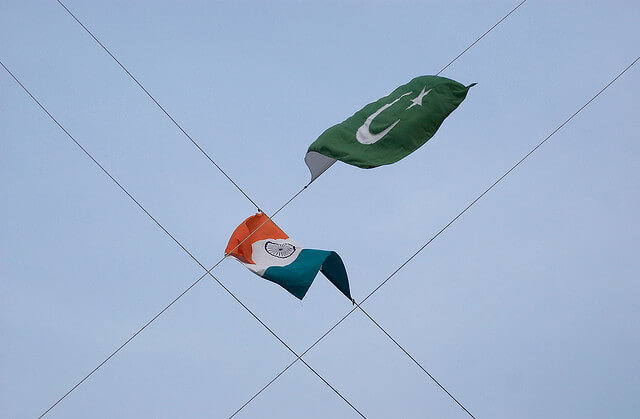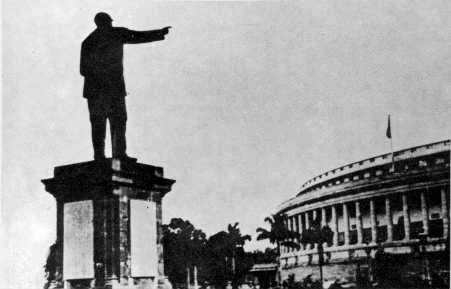This article has been hurriedly and succinctly written to present some observations which came out of various conversations with friends over the last week, most notably with Nikhil. However, all views, as well as any inaccuracies, are mine alone.
After the Pulwana attack that happened about three weeks ago, the logical response was to show the nation’s resolve. An attack of such magnitude could not have been executed without the knowledge and active support from the Inter-Services Intelligence (ISI) agency in Pakistan. To show the nation’s resolve was also necessary since the general election is coming up in a few weeks. To that end, the Government of India (GoI) responded militarily knowing fully well the pulse of the nation.
During the early hours of Feb 26, the Indian Air Force (IAF) attacked a target located inside Pakistan’s Khyber Pakhtunkhwa (KP) province and not in Pakistan occupied Kashmir (PoK). This meant that the Indian aircraft went crossed the Line of Control (LoC) and went in a long distance, thus entering Pakistan’s de facto (not de jure) airspace and launched their missiles, even if they did not (since there is some ambiguity over this) enter KP. Incidentally, Pakistan Air Force (PAF) made the news public even before the GoI did (to be sure, in all probability GoI would have gone forward with the decision to make the event public nonetheless). PAF declared that Indian aircrafts released their payload in open space and no damage to any life or structure was inflicted. A few hours later, GoI informed the location of the airstrike to be in Balakot and termed its operation as a successful pre-emptive non-military strike. This was a clever cloak to put on the entire operation since it was a response to the earlier provocation as well as an airstrike going inside the territory of a sovereign nation-state.
PAF responded the next day by sending in their aircraft and locking the target on Indian military establishments. A dogfight ensued between the PAF and IAF in which an Indian Mig-21 was lost but fortunately its pilot safely ejected himself. He landed in PoK, tried to run away from locals and destroy documents on himself before being arrested by the Pak Army. Shortly afterward PAF declared that a) Two IAF aircraft were shot down and that they have two IAF pilots in their custody, b) No engagement between PAF and the IAF chopper which crashed in Badgam the same day took place, and c) No F-16 had taken part in the operation. Meanwhile, Pak Army also released videos of the arrested Indian pilot. GoI waited for few hours before holding a press conference and declaring a) One Mig-21 has been lost and its pilot is missing in action. We are ascertaining the facts about him being arrested by the Pak Army, b) One PAF aircraft was downed by IAF.
A day later, Imran Khan, the prime minister of Pakistan gave a speech in the parliament and shared his desire about peace between the two nations and informed that the arrested IAF pilot will be released next day. All three wings of the Indian Armed Forces held a joint press conference in the evening to let the nation know that they are ready for any eventuality. IAF also claimed that PAF’s mission was to target Indian military establishments but the plan was foiled by IAF’s swift response. Next day, the IAF pilot, Abhinandan Varthaman was handed over to India at the Wagah border well after 9 pm IST.
The above paragraphs chronicle indisputable facts. Now, to the murky details and some questions these events raised.
The Indian news channels went into a hyper-nationalistic mode and competed with each other to declare how many terrorists were killed. There is some ambiguity about how precise were the strikes carried by IAF and it looks like some of the missiles did miss the target. Nevertheless, no matter how many terrorists were eliminated and how many structures destroyed, going inside and launching an airstrike was itself a sign of GoI’s determination. Pakistan was left with no other option but to respond militarily which it did by sending its aircraft crossing the LoC though it is hard to believe that Pakistan planned to actually strike Indian military establishments since that would have instantaneously escalated the conflict to a full-fledged war. This is because Pakistan realizes very well that it cannot afford to go to a conventional war with India.
PAF retracted on its statement and declared that it has only one and not two IAF pilots in its custody. It looks like an F-16 was actually downed by the IAF (perhaps but not necessarily by Abhinandan). A photo of the wreckage released inadvertently by PAF showed parts which resembled the engine of an F-16, thus falsifying PAF’s claim that no F-16 took part in the operation. Also, the Indian Armed Forces have no tradition of hiding their casualties had another Mig-21 would have been lost. Finally, two more sources point to the use of F-16s. First, IAF showed the remains of missiles launched by the aircraft which are only compatible with F-16s among the aircraft in PAF’s inventory. Second, a video released on Internet purportedly shows two pilots ejecting from the same aircraft which leads more credibility to the notion that F-16 aircraft were actually used. The USA is investigating if PAF used an F-16 supplied by them for anti-terrorist operations only. This might not amount to much since independent observers over the internet have traced the crashed F-16 to one from many that PAF bought from Jordan – and so outside the purview of US legislation.
The reaction of the international community No nation criticized India even in a token way. Most released statements that both nations should maintain restraint. After multiple frantic calls by Pak to China, the latter released another statement along the lines that a nation’s sovereignty should be respected. The fact of the matter is that the operation undertaken by IAF inside KP was in itself an act of war and yet Pakistan found itself so very isolated in the world community that no statement criticizing India came about. In fact, Pakistan has never found itself so much isolated as it finds today.
Imran Khan’s swift decision to release Abhinandan I think it was a shrewd decision by him (must have been taken with Army in agreement) which deflected the debate away from terrorism. There is no doubt that once international pressure would have mounted, Pakistan would have released Abhinandan anyway. But, by taking the step voluntarily, Imran Khan scored some brownie points.
Abhinandan’s treatment by the Pak Army This is a question on which opinion is divided. Some analysts believe that Pakistan Army is a rogue mercenary force which cannot be trusted. Of course, when they took the decision of making the pilot’s arrest public, they had no option but to return him back safely. On the other hand, some specialists, even in the Indian army, believe that the Pakistan Army is a highly professional body and such treatment was expected from it. However, there is no doubt that on two accounts the Pakistan Army behaved unprofessionally. First, within hours of arresting Abhinandan, it released video footages showing him blindfolded and then interrogating him. Second, before his release, it made Abhinandan record another pathetic video about how he was treated. This short video has about 16 cuts and hence has been edited to fit the narrative that the establishment wants to portray. Finally, the timing of Abhinandan’s return was carefully planned and the mode orchestrated in a way so that the event can be viewed during the prime time on news channels. Meanwhile, amongst all the above, many sane voices in Pakistan were muted and faded. Members of the civil society in Pakistan actually held demonstrations asking their government to free Abhinandan before Imran Khan’s speech and similarly asked the media and government to delete the awfully edited video mentioned above.
Comparison between GoI’s current approach to that after 26/11. For one, times were different then. The world community was not as supportive of India in 2008 as now. America was also more involved with both administrations in both nations (India and Pakistan) and played a more active role in the world as it does now. Shivshankar Menon who was the Foreign Secretary of India then writes that he as well as the National Security Adviser recommended a decisive overt military response to the government but Prime Minister Manmohan Singh backed off. Menon writes further that after the heat of the moment passed, the decision taken by the government was the right one. It is from that time that India started isolating Pakistan and thus dropping the hyphenation in between. As another observer pointed out last week, it is because of the restraint shown in 2008-9 that India gained the capital which Modi can now spend by his militaristic approach. It can be said that the response in 2008, as well as that in 2019, were both by and large right. Of course, there can be discussions and debates about the details involved in each response.
What was achieved and lost by India? Achievements: a) India showed Pakistan the determination that it will not back down from using the militaristic option, b)India drew a clear new red line and in the process called Pakistan’s bluff “of a certain type” and c) Pakistan got to know how unprecedently isolated it is in the present world. There is one important downside: India has further limited its options for the next time since it is certain that Pakistan will not have a sea change in its policy just yet. The present Indian response was mightier than the surgical strikes carried out in 2016. India has taken a path on which the Indian media and “nationalists” clamoring for blood and war will lead to mounting expectations from the government if something happens again. Where will India draw the line for itself is one question it will have to think about. It will have to tread more carefully than ever before.
I have long maintained that as of now there is no solution to the Pakistan problem. That nation’s administration operates with so many rogues and camouflages that it is not possible for another nation to get desired results. One of the chief problems is that every nation is in the same quandary as us. In Pakistan, there is a state within a state within a state… No country, not even the United States, has control over the right levers. On the hypothetical side, I have long maintained that the breaking up of Pakistan from its internal dissensions will not be good for India. It is always wise to tackle a big enemy you know than multiple small enemies you don’t. India will not want its backyard to be filled with many rogue state(s) in possession of “something.”
Aftermath What should India do? It should increase its conventional warfare capabilities. It should make the difference in defense capabilities between the two nations so large that Pakistan finds itself unable to afford any provocation. Pakistan cannot match the economic resources that India can command to achieve its goals. This is also a good opportunity for India to finally establish capabilities of indigenous defense equipment production, seven decades after independence.
Kashmir Kashmir combines three different issues: insurgency, violations by the Indian state, and Pakistan sponsored terrorism. The first two are inter-related while the third one feeds on them. I am no expert on Kashmir but can say that the approach taken by this government in the past five years has been a tale of big success and even bigger failures. What Kashmir (or any other insurgency) needs is a simultaneous application of cold and hot response. This government has rightly sent a cold response by its militaristic approach. But, what it has lacked is to simultaneously approach the pro-India forces in the valley as well as sending warm signals towards the Kashmiris - a case in point being its initial tactical indecisiveness when Kashmiri students were attacked last week. It is to be seen if this government will change its policy before the general election and in which direction.

 The Impending Death of Biography
The Impending Death of Biography